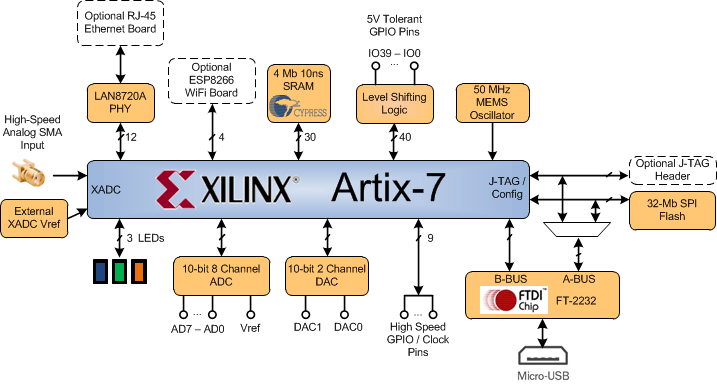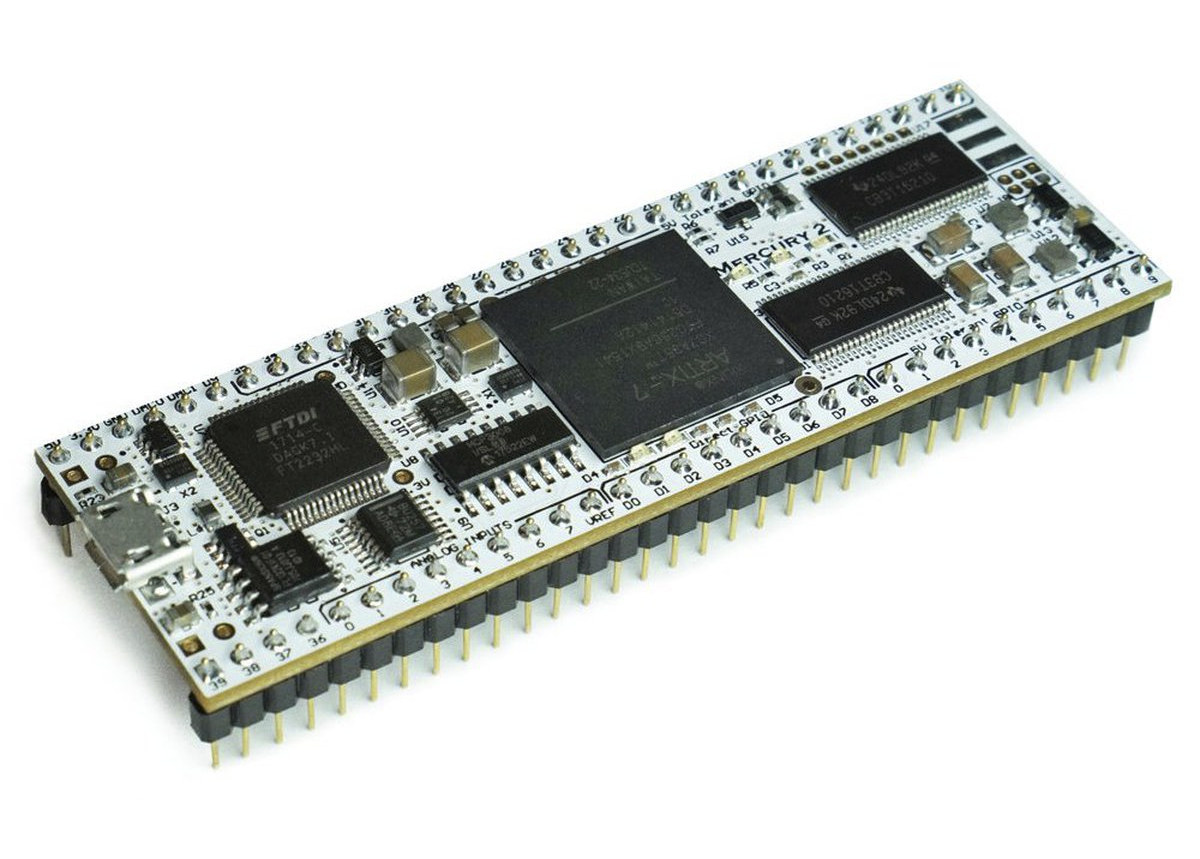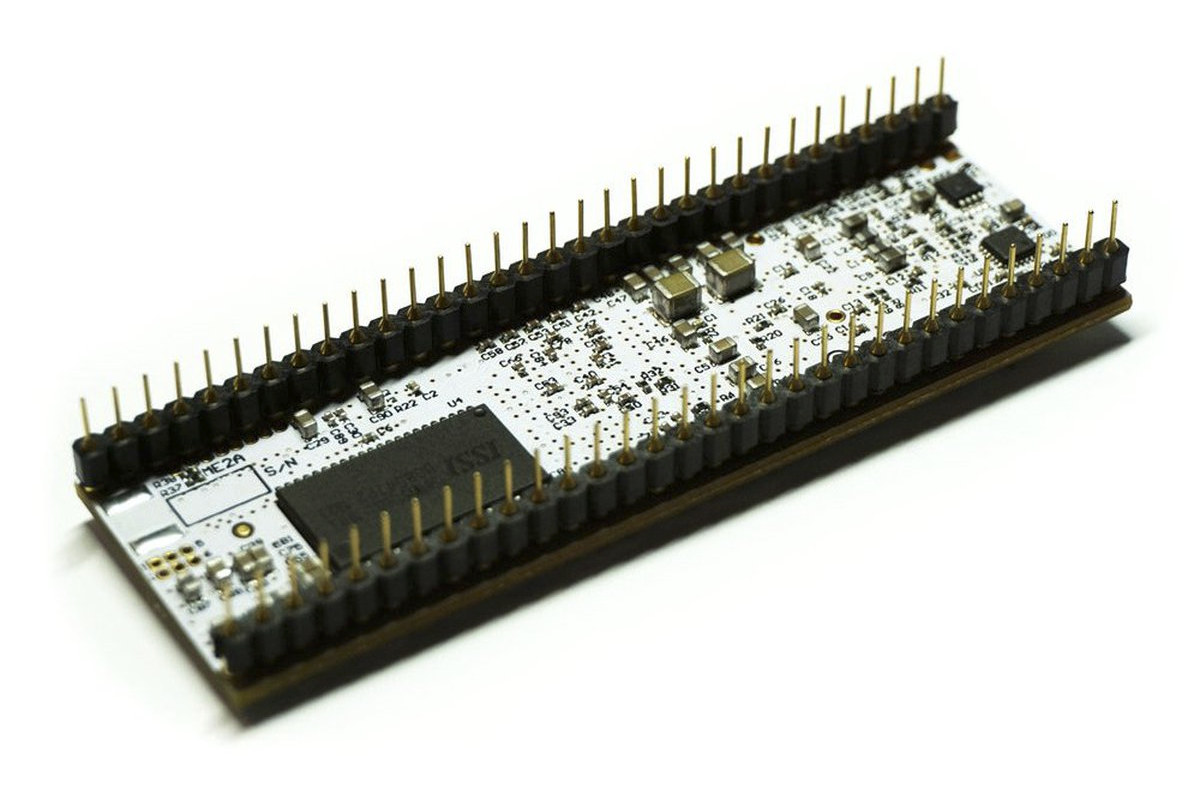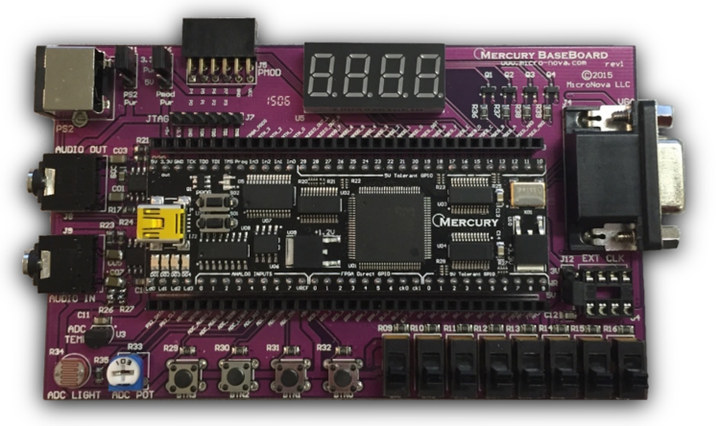While we now come across more and more FPGA development boards, very few are designed to be inserted into a breadboard. We’ve previously covered TinyFPGA BX, Fipsy, and QuickFeather FPGA breadboard-friendly boards.
All those boards are however based on entry-level FPGAs like Lattice Semi ICE40 or QuickLogic EOS S3, and if you’d like a more powerful FPGA board that fits into a breadboard, MicroNova Mercury 2 development board may meet your requirements with a Xilinx Artix-7 FPGA.
MicroNova Mercury 2 specifications:
- FPGA – Xilinx Artix-7A FPGA (XC7A35T) with 33,280 logic cells or XC7A100T with 101,440 logic cells
- System Memory – 4 Mbit (512K x 8-bit) asynchronous SRAM
- Storage – 32 Mbit SPI flash for configuration & user data
- Networking – On-board Microchip LAN8720A 10/100M Ethernet PHY
- USB – Dual-channel high-speed USB 2.0 micro USB port (ch A for config, ch B for user)
- 2x 32-pin headers
- Fast Ethernet signals
- 8-channel, 200 KSPS, 10-bit ADC via Microchip MCP-3008
- 2-channel, 225 kHz, 10-bit DAC via Microchip MCP-4812
- 40x 5-volt tolerant IO pins
- 10x FPGA-direct high-speed IO pins
- Debugging – 6-pin Expansion header for JTAG interface, FTDI chip for micro USB debugging/programming
- Misc – 3x User LEDs
- Power Supply – 5V from the micro USB port or external 4.5V – 5.5V power source
- Dimensions – 76.2 x 25.4 mm

The Mercury 2 board can be programmed with the Xilinx Vivado design suite, and the resulting bitstream can be flashed to the board over USB using mercury2_prog command-line programming utility aka Mercury 2 Programmer. You’ll find schematics and other documentation on MicroNova website.
If you don’t feel like connecting the board to a breadboard and deal with all the required wiring, the company also provides the Mercury baseboard that works with the older Spartan-3A based Mercury board and the new Mercury 2 Artik-7 FPGA development board covered in this article.
The baseboard comes with a 64-bit socket for the FPGA devboard, as well as a 4-digit seven-segment display, four push-buttons & eight toggle switches, a PS/2! port for keyboard or mouse, a VGA port, a Pmod-compatible connector, 3.5mm audio jacks, an analog temperature sensor, a light sensor, and a potentiometer for use with the analog-to-digital converter.
Mercury 2 DIP FPGA board can be purchased for $129 and up on Tindie or MicroNova store where you’ll get the options to get a higher capacity SPI flash, or Xilinx Artik-7 XC7A100T FPGA.

Jean-Luc started CNX Software in 2010 as a part-time endeavor, before quitting his job as a software engineering manager, and starting to write daily news, and reviews full time later in 2011.
Support CNX Software! Donate via cryptocurrencies, become a Patron on Patreon, or purchase goods on Amazon or Aliexpress







